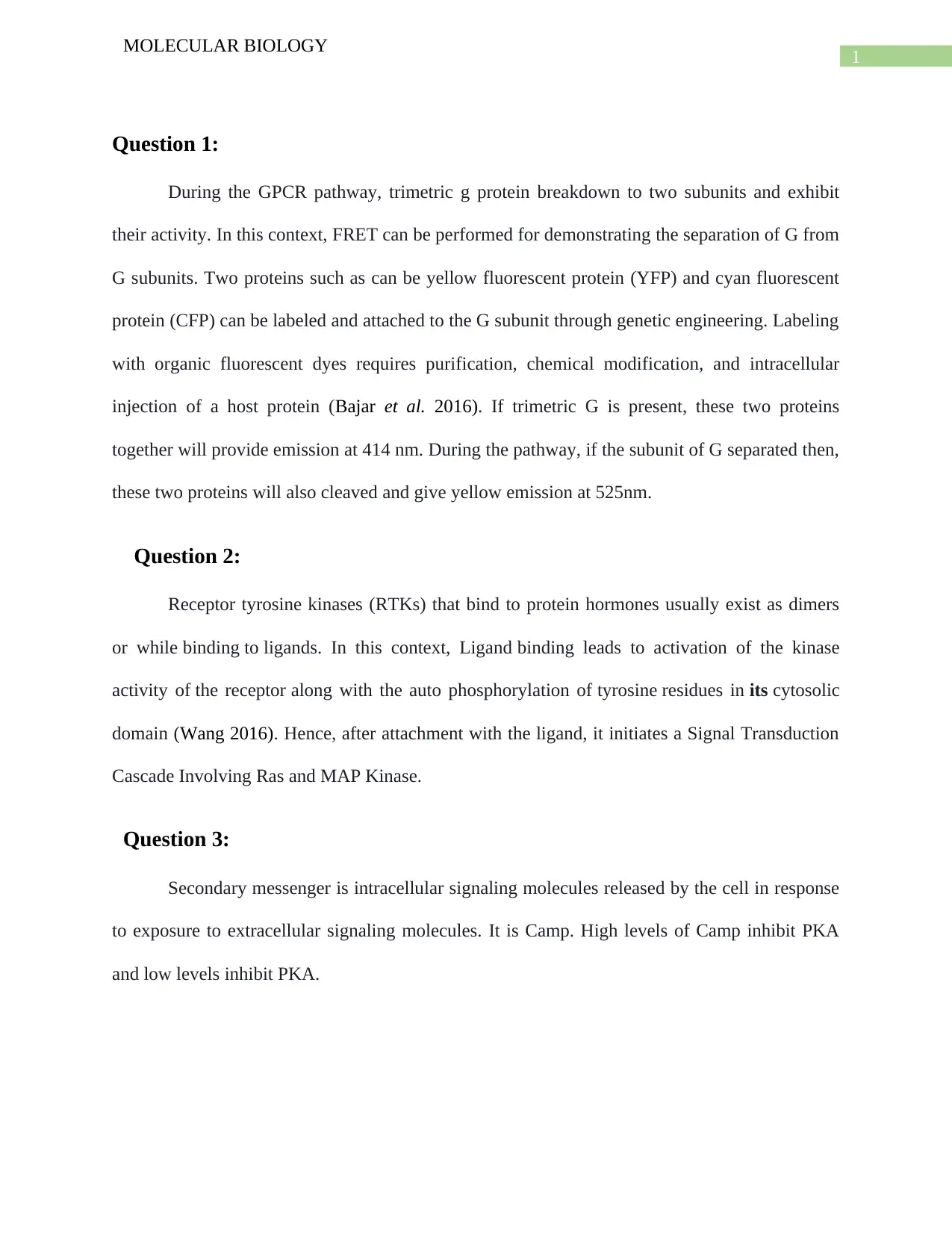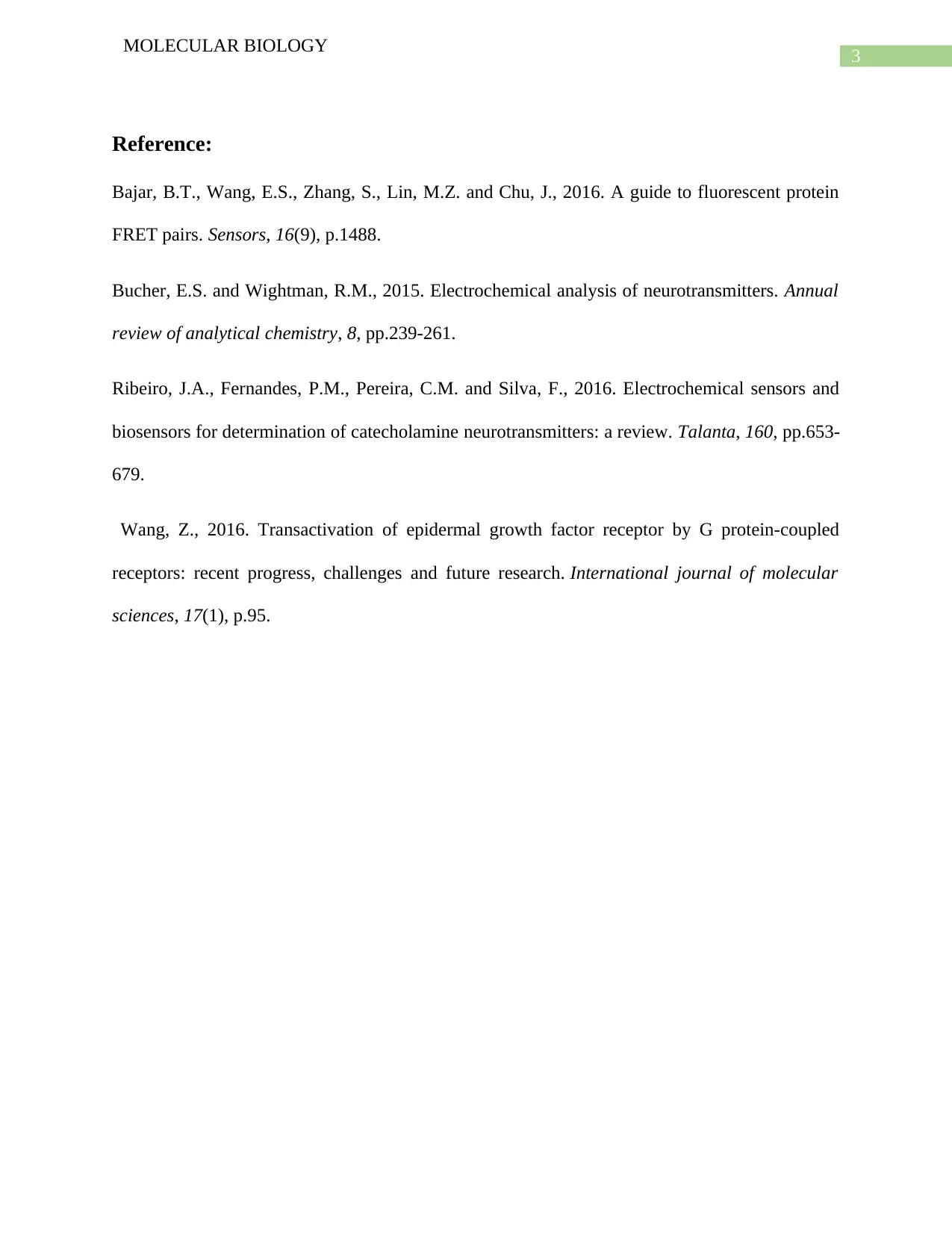Molecular Biology Assignment: Electrical and Synaptic Signaling
VerifiedAdded on 2022/09/10
|4
|544
|20
Homework Assignment
AI Summary
This assignment delves into the core concepts of molecular biology, focusing on signal transduction mechanisms within neurons. It examines the GPCR pathway, receptor tyrosine kinases (RTKs), and the role of secondary messengers like cAMP. The assignment further explores the generation and maintenance of resting membrane potential, emphasizing the Na+/K+-ATPase pump. It also covers neurotransmitters, their functions, and examples of their inactivation processes within the synaptic cleft. The student's responses provide concise explanations of these key biological processes, supported by relevant references.
1 out of 4







![[object Object]](/_next/static/media/star-bottom.7253800d.svg)